
David John Kassan
“Historical materialism wishes to retain that image of the past which unexpectedly appears to man singled out by history at a moment of danger. The danger affects both the content of the tradition and its receivers. The same threat hangs over both: that of becoming a tool of the ruling classes.”
Walter Benjamin (On the Philosophy of History)
“The motion which took shape in creation can also be interpreted as linguistic motion.”
Gershom Scholem (The Name of God and the Linguistic Theory of the Kabbalah)
“It simply goes without saying that the falling of a human hair must matter more to the devil than to God, since the devil really loses that hair and God does not.”
Frank Kafka (The Invention of the Devil)
“Thereby, the whole bourgeois conception of wages hitherto, as well as all the criticism hitherto directed against this conception, was thrown overboard once and for all. It was made clear that the wage worker has permission to work for his own subsistence—that is, to live, only insofar as he works for a certain time gratis for the capitalist (and hence also for the latter’s co-consumers of surplus value); that the whole capitalist system of production turns on the increase of this gratis labor by extending the working day, or by developing the productivity—that is, increasing the intensity or labor power, etc.; that, consequently, the system of wage labor is a system of slavery, and indeed of a slavery which becomes more severe in proportion as the social productive forces of labor develop, whether the worker receives better or worse payment.”
Karl Marx (Critique of the Gotha Program)
There is a feeling I have of late, and it occurs once or twice a day, and that is that I am wandering around in a dream, and it may not even be my dream. There is a haze, a film, that seems to cover the entirety of daily life. As if I need to clean my lens. The surreal sensation of standing next to a sixteen year old wearing a single-use cloth mask, one destined to later pollute the waterways of the planet (along a trillion others that have entered those waters over the last year). The unreality of conversations with people who ‘believe’, and who can barely control their rage at those of us who do not. And then there are those who are indifferent. They vaguely blame Trump for not acting fast enough, or something. They never question the actual parameters of the virus, never question the mounting contradictions in the pandemic narrative. For them, and the ones I know live in big U.S. cities, the pandemic has not really affected them very much. These people are affluent, white, educated, and none of them live paycheck to paycheck. When they go out they see few masks, or many masks, it doesn’t really matter, and they read the NY Times and watch CNN on occasion. For them the Covid story is relatively remote, something like debates over minimum wage.
Benjamin ends his essay, the last thing he wrote, with this:
“Not man or men but the struggling, oppressed class itself is the depository of historical knowledge. In Marx it appears as the last enslaved class, as the avenger that completes the task of liberation in the name of generations of the downtrodden. This conviction, which had a brief resurgence in the Spartacist group, has always been objectionable to Social Democrats. Within three decades they managed virtually to erase the name of Blanqui, though it had been the rallying sound that had reverberated through the preceding century. Social Democracy thought fit to assign to the working class the role of the redeemer of future generations, in this way cutting the sinews of its greatest strength. This training made the working class forget both its hatred and its spirit of sacrifice, for both are nourished by the image of enslaved ancestors rather than that of liberated grandchildren.”
Walter Benjamin (Ibid)

Arcmanoro Niles
There is a still resonating Trump factor in all political discourse, such as it is, in the United States. One wonders if a hundred years from now historians will look back and ponder the enormous duty Trump performed for the ruling class. Enormous. Had Bush Jr. screwed the pooch on Covid (in the imaginary Covid screenplay) he would have been ridiculed mildly, as he was for Katrina (hell of a job, Brownie) and that would be all. But Trump elicits no such folksy sympathy, no such considerations for Shrub’s being dumb. Nothing of the sort. There was in the white bourgeoisie a white (sic) hot unnatural incandescent hatred of Donald Trump. But, that aside, the facts remain that Biden and Harris have openly shown contempt for their campaign promises. I mean, you know, more than usual. Kamala who stood with Central American immigrants for a photo op, before the election, recently (after the election) scolded them and told them sternly “Don’t come here”.
“Give me your tired, your poor,
Your huddled masses yearning to breathe free,
The wretched refuse of your teeming shore.
Send these, the homeless, tempest-tossed to me,
I lift my lamp beside the golden door”
Emma Lazarus
Not so much now, I guess. Covid and all.
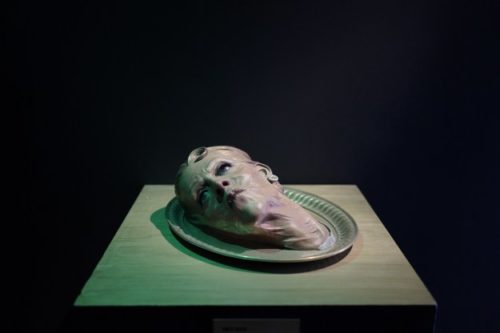
Paolo Schmidlin (photo by Alex Ganneleau)
“Phantasmagorias provide narcissistic control. Buck-Morss’s phrase “optical illusion” recalls Benjamin’s use of it describing the delusional compensations of the Counter-reformation Baroque’s projections of omnipotence and totality. Wagner’s operas did this well, too, as did the utopian fantasies propagated by Fascism. The overarching function of the phantasmagoria is to conceal complexity, contradiction, and irony. “
Elizabeth Stewart (Catastrophe and Survival; Walter Benjamin and Psychoanalysis)
It was Marx who first used the word ‘phantasmagoria’ to describe the world of commodities. Psychoanalytically it tied in with schizoid and psychotic personalities, with a refusal to tolerate the transition from infantile perception, and hence turns that rejection outward.
“Phantasmagoria is the fantasy of a total—and totally controlled—mental and physical environment. Hallucinations and phantasmagoria both reflect the return of myth and fate to modernity, its re-enchantment. Both Bion’s understanding of hallucination and Benjamin’s phantasmagoric anesthesia are defenses against the traumatic assaults of modernity on the sensorium; both emphasize the malignancy of phantasmagoria, its hallucinatory and violent elements, and its link to war.”
Elizabeth Stewart (Ibid)
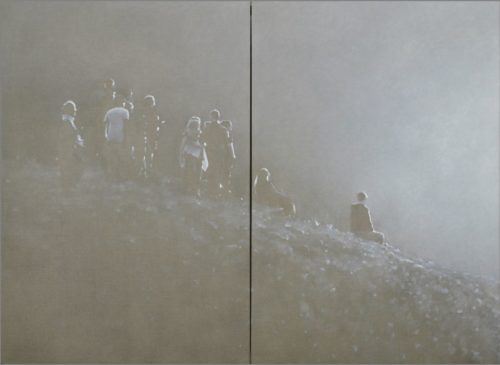
Mingjun Luo, photography.
Benjamin was struck with the emptiness of modern life. It’s what he saw in Kafka…and this from Elizabeth Stewart again: “Benjamin reads Kafka’s work as pervaded by forms, gestures, language, meaning, and law that no longer “know” their own content: tradition and transmission have failed.”
Today, an invitation appeared in a friends email box, from an art gallery:
“You are invited!!!!
Thursday August 12th 7pm
(You must be vaccinated to attend the opening)
To attend opening night you must be fully vaccinated and wear a mask for the safety of yourself and others
partially and un-vaccinated persons can view the exhibition during regular business hours starting August 13th 10am”
There is the sound of delight in this, almost. A far right wing paper wrote “We have the civic religion, but there is also the primitive fear of nature and nature’s wrath. Then there is the panic. This is what really gave the whole thing its juice. Like the satanic panics or the day care panics or the witch trials, the Covid panic caused most people to suspend their sense of disbelief. The lack of evidence became a weird proof of the danger.”
The Panic Culture
And this is true, and its distressing that it comes from far right rag. But this is why I think the current state of unreality can be traced back, for its been a long time in the making. But what can be traced is the malignant nature of the bourgeoisie, for the working class, as one can see in France, is protesting in the hundreds of thousands, if not more. And the violent police reaction also is worth noting. There are now viral videos of German cops punching a fourteen year old boy who was trying to help his mother to her feet. Videos of French cops randomly punching people on the street on the assumption they were in support of the protest. This is, in one sense, the endgame for the infantilization of western society. In another it is the recreation of fascist imagery and style.

King David
There is this surfacing of a schizoid desire for fascism, though what that means exactly is complex. There seems a keen interest in a medical apartheid, and for goon squads on the streets to enforce whatever near random decree the state has issued. It is the Hollywood factor, in one sense. It is cinematic fascist style that has been most acutely embraced. I have heard not a single liberal (in media) express the slightest dismay at the police tactics.
“To bring things closer to us, or rather to the masses, is just as passionate an inclination in our day as the overcoming of whatever is unique in every situation by means of its reproduction. Every day the need to possess the object in close-up in the form of a picture, or rather a copy, becomes more imperative.”
Walter Benjamin (A Small History of Photography)
“In reality, of course, it is the whole art which without any exception found itself in the new situation,… art as a whole becomes commodity or it does not become it at all.”
Bertolt Brecht (Fünf Schwierigkeiten)
Brecht was echoing Adorno and his 1932 essay on music. The reality of the commodity form was unavoidable.
“Mourning is the state of mind in which feeling revives the empty world in the form of a mask, and derives an enigmatic satisfaction in contemplating it.”
Walter Benjamin (Origin of German Tragic Drama)

J. Augustus Knapp (illustration for John Uri Lloyd’s ‘Etidorhpa’) 1895.
One could argue that Benjamin above all others saw the implications of an emotional plague (as Reich called it) and the mental disorders of a modern experience that felt largely empty. It is what drew him to Kafka, I suspect. And from another angle it was Marx, maybe most profoundly in The Critique of the Gotha Program, that laid out the delusions of liberal reform and revisionist sensibilities. And in Benjamin’s last major essay he cites the Gotha letter. To read any of the many short pieces on Benjamin’s last days is, besides being painful and tragic, revealing for the compulsive fascist tendency for documentation, for rules reinforced by papers, and the sadism of this meaningless (except for them) exercise in bureaucracy. Benjamin lacked an exit visa and the Vichy government took particular pleasure in enforcing such details. So while a vaccination passport is not (yet) a life and death issue, it feels perilously close in spirit. But the point here is more what the contemporary bourgeois psyche betrays of its own evolution over the last two hundred years say (or longer if one wants). It is a side bar observation that boy there is a lot of bad writing on and about Benjamin. I’m not sure what that suggests, if anything, about Benjamin’s oeuvre, but one egregious example was from a woman who heads the Hannah Arendt Foundation, or something, and which appears, unsurprisingly, in the LA Review of Books. And such pieces make up a kind of secondary (or tertiary) layer of cultural sediment which is unique to western arts and letters over the last twenty five years. They are faux scholarly, but too academic in presentation to be op ed material or for anything like Spiked or BOMB, et al. They are a self consciously niche bit of ersatz scholasticism. They are to textual criticism (or literary bio) what HBO is to cable television.

Zhang Yingnan
“Even today, civil religion hangs in the atmosphere like a fine mist. We pledge allegiance to the flag (a political statement) but, in the same breath, go on to say that the nation stands “under God” (a religious statement). Memorial Day and the Fourth of July are more than political celebrations. They prompt bowed heads and moist eyes as flags flutter over courthouses and churches alike. Each year thousands of tourists file past the looming statue of Abraham Lincoln at his memorial in Washington, D.C. They whisper, with caps removed, as if they were in a cathedral. We treat some political figures, especially in death, as if they were saints.”
Jon Butler et.al. (Religion in America)
“My only visit to a true megachurch took place a few years ago when I sat in with a delegation of mainline church communication officers at Willow Creek Community Church near Chicago. Willow Creek is in many ways the prototype of the megachurch, also known as the seeker’s church or “next” church. One incident during my time there stands out. As this group sat in the church’s huge auditorium, the tour guide asked them to name anything they thought was missing from the space. “There’s no cross,” said several, almost in unison. “That’s right,” replied the guide, who went on to say:
‘In fact, you will see no Christian symbolism here at all. The metaphor or image we are trying to project here is corporate or business, not traditional church. Now, we do have a cross. We bring it out for special occasions, like baptism. When I was baptized here, all of us were asked to write our sins on pieces of paper and stick them on the cross as we came forward. I’ll never for- get looking up from the baptistery at that cross, covered in paper. I had not really understood atonement until that moment. So we think of the cross as a prop.'”
Stewart Hoover (The Church at Willow Creek)
It is useful to remember just how steeped in religion the U.S. is, and has always been. In the 1800s , up to about 1860, the House of Representatives was used on Sundays for religious services. Episcopalians, Congregationalists, Baptists, Methodists, Quakers, Unitarians, Catholics all were represented, varying slightly from state to state.

Henri Cartier Bresson, photography. (Informer for gestapo is recognized. Dessau Deportation Camp, 1945)
Allow me another quote from Butler’s book….“The closing years of the eighteenth century saw the birth of another pattern that remains strong today. That trend went by various names. Some philosophers called it political religion. Benjamin Franklin dubbed it “Publick Religion.” After World War II many called it civil religion. By whatever name, political or public or civil religion stemmed from a desire to give religious meaning to the nation itself. It represented more than patriotism or love of country. Rather, it symbolized a desire to place the United States in a larger framework of significance, an attempt to say that America occupied a special or even unique place in God’s plan for the world. In civil religion, in other words, religious language blurred with political language so that the two became almost indistinguishable.”
There was literally, from day one almost, a constant drum beat of exceptionalism in the American colonies. Now without getting too far off point here, this feels very much a deeply entrenched sensibility, born of many factors, including probably, insecurity. After the ‘revolution’ the Church of England could no longer demand fealty to the King so the religious leaders in the colonies came up with a revised title, the Protestant Episcopal Church of the USA. The Methodists did the same, and I think its easy to forget just how strong an influence the Methodists had throughout the 19th century in the US. Far stronger than any other protestant sect. In 1850 one third of protestants in the U.S. were Methodist. Today one third are Baptist, and specifically Southern Baptist. In any event, charting the Puritan and then Methodist sensibility and then Southern Baptist, the white American bourgeoisie only added genocidal racist violence to complete the image of the American character.
Those values, passed down from the time of John Adams and Cotton Mather, to the mid 19th century Methodists, were interrupted after WW2. The defeat of fascism was largely the doing of the Soviet Union, and the U.S. quickly launched Operation Paperclip to harvest as many Nazis as possible for research and teaching, for whatever they might find useful. The ruling class never ever felt estranged from National Socialism, and the bourgeoisie only reluctantly, really. In the early 30s there was great white American support for National Socialism.
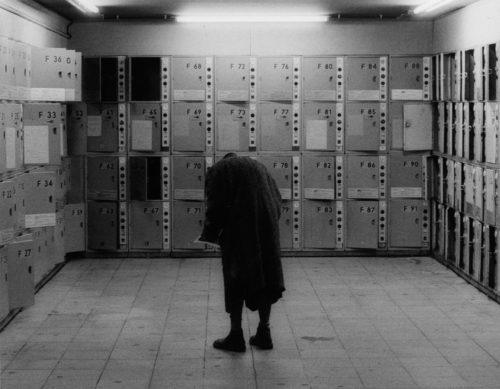
Kenneth Gustavsen, photography.
“In the years before the outbreak of World War II, people of German ancestry living abroad were encouraged to form citizens groups to both extol “German virtues,” around the world, and to lobby for causes helpful to Nazi Party goals. In the United States, the Amerikadeutscher Volksbund, or German American Bund, was formed in 1936 as “an organization of patriotic Americans of German stock,” operating about 20 youth and training camps, and eventually growing to a membership in the tens of thousands among 70 regional divisions across the country. On February 20, 1939, the Bund held an “Americanization” rally in New York’s Madison Square Garden, denouncing Jewish conspiracies, President Roosevelt, and others. “
Alan Taylor (The Atlantic, 2017)
All of this background is part of the framing for the Covid story. For why the resistance in the U.S., while substantial, falls far short of what you find in France or Italy for example. The effects of the internet is incalculable, in one sense. And I and many others have written a good deal about the effects of screen habituation and the toxicity of social media. But I think at a certain point there is a danger in focusing too exclusively on this aspect of the looming fascism driven by the WEF, the U.S. government, and assorted extreme high net worth guys. There is unprecedented concentration of wealth at the very top now. But a lot of writers critical of the Reset and stakeholder capitalism, and Green New Deal write as if the technology itself, what is often called AI, is all by itself changing the nature of western societies. It is not. What is new is that we are likely at the end of market capitalism. Someone has called the current phase the ‘controlled demolition of capitalism’.
And part of the problem with resistance has been the media effectively linking any dissenting opinion with far right Nationalists and Trump supporters. The lack of critical thinking regards media is breathtaking. This same bourgeois class I keep discussing here has stunningly ignored the obvious contradictions, and because they have far more sympathy with the ruling class than the working class, they are blind to the fact that the pandemic has initiated a massive class assault.
It needs to be noted that the American working class has a long history of radicalism and organizing. Eugene Debs at the turn of the 20th century saw a bright future for socialism. And 1912 is often cited as peak leftism in the U.S. With the onset of the Great Depression, another entire generation lurched to the left. The American working class, from the Great Depression onward felt the distance from the white bourgeoisie. This is worth a much longer analysis but it is important to recognize how much was fought for and won. And that the Vietnam War and then the fall of the U.S.S.R. had catastrophic effects on the American left. And those effects have served to marginalize actual voices of Marxist analysis, in lieu of the bland social democratic left that is all but indistinguishable from liberal Democrats. The crisis is not a crisis for the ruling class, it is a crisis initiated against the working class.
That distance, though, between the worker and management was more than simply ideological or simply class, it was also something more ineffable, something that I think would later come into more focus, if not clarity at least identifiable. Understanding the contemporary malaise, even pre Covid, means a deeper reading of western culture, or so I believe.

Gunnar Smoliansky, photography.
To return to Benjamin for a moment, apropos of what has been lost over the last hundred years, and to his ideas of mimesis. Now Benjamin’s mimesis is not quite Adorno’s mimesis, but they do overlap in places. But what is crucial for Benjamin is the idea of the mimetic production. That impulse, or instinct almost, to become similar, to behave mimetically, provided an original relatedness, a “grounded” relation to the object, and something of a primal uncanny relation to the ‘other’. For Benjamin the mimetic has taken refuge in language.
And Benjamin’s theories of language border on mysticism, but they do identify a quality in art, in all creativity, that modern life has severed or squashed. Elizabeth Stewart quotes a letter from Benjamin to Martin Bubuer…
“Every salutary effect, indeed every effect not inherently devastating, that any writing may have resides in its (the word’s, language’s) mystery… My concept of objective and, at the same time, highly political style and writing is this: to awaken interest in what was denied to the word; only where this sphere of speechlessness reveals itself in unutterably pure power can the magic spark leap between the word and the motivating deed . . . Only the intensive aiming of words into the core of intrinsic silence is truly effective.”
Walter Benjamin (Letter to Martin Buber)
This is the theological Benjamin. But for Benjamin his theology is inextricably bound to the political.
“And God said, Let us make man in our image, after our likeness: and let them have dominion over the fish of the sea, and over the fowl of the air, and over the cattle, and over all the earth, and over every creeping thing that creepeth upon the earth.”
Genesis 1; 26

Buddha Amoghasiddi, Tibet 1200 to 1250.
This is a passage of importance for Benjamin (and many others). For it is the starting place for Christianity and for Judaism. Now I will quote Elizabeth Stewart again, here…
“Most interesting is the element that he calls, in German, the “Imago-Rest,” the trace or remnant of a pre-verbal identification with the divine in the human being that cannot be lost (xxviii): it refers also, in my mind, to the “little piece of the real” that opens up an equally “inexhaustible” abyss within the subject, having to do both with the body not fully covered by language—and, as we have already seen, to the “origin” of language, the lost Thing, that “unforgettable first object,” the mother, the ‘Sovereign Good.'”
Elizabeth Stewart (Ibid)
For the purposes here, in taking in Benjamin’s ideas of mimesis, the central idea revolves around the brokenness of human cognition. But like Adorno, the redemptive lies in that which is un-expressible. And in silence. And without using the term positivism, or the instrumental (later used by Adorno and Horkheimer) the core mimetic compulsion frees man from false consciousness, but that society sets up detours to any such experience, to anything of a revelatory nature. The chains of repressive positivist thinking enforced the subject -as -observer, the lay scientist.
“Graphology has taught us to recognize in handwriting images that the unconscious of the writer conceals in it. It may be supposed that the mimetic process which expresses itself in this way in the activity of the writer was, in the very distant times in which script originated, of utmost importance for writing. Script has thus become, like language, an archive of nonsensuous similarities, of nonsensuous correspondences.”
Walter Benjamin and Gershom Scholem (Briefwechsel )

Lothar Hempel
As Stewart notes, Benjamin’s mimesis is very close to dissociation. Benjamin was directly in danger for the last years of his life. These meditations were bound up with fascism, and he spent his time trying to understand the reality of this catastrophe. That it could happen so quickly, so completely.
“In this scene in which Benjamin describes, however obscurely, the process of his “task” of “reading” in the face of the historical catastrophe of a triumphant Nazism, it is the “detours” on the way back to the “origin” by way of the other— detours that read like Freud’s “detour” of Eros in the face of Thanatos, as he describes it both in Civilization and Its Discontents (1930) and Beyond the Pleasure Principle (1920)—that seem to contain a space of survival.”
Elizabeth Stewart (Ibid)
Benjamin’s hermetic theory of language makes more sense when seen in the shadow of anti-semitism, and the spectre of fascism (even as early as 1912). Benjamin was acutely aware of the forces of history, and of the always present forces of domination. His studies with Gersholm Sholem on Kabbalah were to shape his thinking for the rest of his life.
“The question regarding the essence of knowledge, law and art,” he writes in a letter composed a few years after completing his essay on language, “is linked to the question of the origins of all human expression of the intellect out of the substance of language.”
Walter Benjamin (The Translator’s Task {Wesen der Sprach})
Benjamin wanted to find in the Book of Genesis something essential about text and knowledge.
“The Bible, he {Benjamin} argues, can be read philosophically; it can be read as an exposition of principles based on an idea of language. His argument is such: if the Bible is to be understood as revelation, it must therefore offer the basis for metaphysical speculations concerning the origins and the nature of language.”
Eric Jacobson (Metaphysics of the Profane)
The relevant aspect here is Benjamin’s ideas on not just language, but on mimesis. The idea of a close reading of scripture fascinated Benjamin. For mimesis had retreated into language. It was a search for a God’s mimetic impulse. Mimesis was looked at in a political light, as well as aesthetic. Benjamin saw the immediacy of expression as a form of magic. He was mostly thinking of language, but not exclusively. And here is the dimension of his thought that Adorno had the most problems with. Because magic and myth are highly ambivalent ideas. Myth can mean regress to barbarism.

Eng Tow
“Psychoanalysis began as a further advance of civilized (scientific) objectivity; to expose remnants of primitive participation, to eliminate them; studying the world of dreams, of primitive magic, of madness, but not participating in dreams or magic, or madness. But the outcome of psychoanalysis is the discovery that magic and madness are everywhere, and dreams is what we are made of.”
Norman O. Brown (Love’s Body)
But Benjamin’s search was for truth, not ‘the’ truth, but the truth of an idea. His early essay on Dostoyevsky is revealing, for he saw the critic was there, as was art, to express a social truth. The critic was…
“…to grasp the metaphysical identity of the national and the human in the creative idea underlying Dostoevsky’s novel. For like every work of art this novel is based on an idea, or, as Novalis put it, “It has an a priori ideal, an implicit necessity to exist.” And the task of the critic is to articulate this idea and nothing else.”
Walter Benjamin (On Dostoyevsky’s The Idiot)
The mystical side of Benjamin was rooted in social truth, in finding social truth. His devotion was really to the idea of a working class revolution. He never trusted social democracy. And his trip to Moscow in 1927 caused him some ambivalence. (partly because of his ill fated affair with an actress). But also because he saw the difficulty of the transition to real communism. That there was a skeleton left of bourgeois respectability, but one stripped of its ornamentation. He described apartments looking like waiting rooms at an infirmary. The bourgeois penchant for surplus decoration was gone but what was left was starkly depressing. The aesthetic failure worried him, it perhaps portended other failures. But he never doubted the importance of the Soviet revolution. But I digress. The mimetic compulsion, or instinct, or primal impulse, according to Benjamin, has been buried. It hides within language, and hence must be drawn out.

August Sander, photography (Soldier, 1940)
“On drawing out this place in history, Benjamin writes, “criticism is the mortification of the works. Not the intensification of consciousness in them (that is Romantic!), but their colonization by knowledge. […] The task of interpreting works of art is to concentrate creaturely life in ideas. To establish the presence of that life.” This imbuing of knowledge into the work requires political judgement.”
Louis Sterrett (Caesura, July 2021)
The process of examination, of contemplation was for Benjamin, as it was for Adorno, an act of deep concentration. I remember Pierre Boulez, somewhere, discussing composers and the name Vivaldi came up and Boulez grunted, ‘oh thats music to brush your teeth by’. I think such a comment today is quite rare. The anti-intellectualism is so pronounced that it has bled into circles made up of intellectuals. As Russell Jacoby pointed out, the shift toward equating *intellectual* with academic was part of a process that diluted public discourse, accompanied by the rise of suburbs (fleeing black inner cities) and then the gradual disappearance of small press publications, and leftist bookshops. All of it, along with the ascension of mass media, and *entertainment* meant that Bohemian scenes also gradually disappeared. After the 60s, the last gasp of counter culture of any kind, there has been a homogenization of ideas whose end game is the madness of the Covid narrative.
Today the venerable New Yorker published a humor section with advice on how to make sure people know you are vaccinated (and not an asshole, as the writer put it). Or the Tate Modern offering a DJ, and free vax shots.
On the one hand, you can see this as desperation. On the other is more evidence for cultural decline.
Or this, which is what, apparently, passes for art criticism these days. https://artreview.com/can-ai-save-us-contemporary-art-dead-end/

Daniel Maidman
The seriousness of criticism has been lost. And part of the loss, culturally, of an avant garde, has to do with urban gentrification, and what Mike Davis called (I think it as Davis) fortress cities. Class inequality is affirmed in city planning today. And the deracinated urban experience is without a bohemian element. It exists, in some ways, in fringe immigrant neighborhoods. In Los Angeles that would mean East LA and Watts and South Central. Parts of Detroit has it. Culture is only alive in flickering lamps of organic creativity on the outskirts of the white bourgeois enclaves with their surveillance and policing.
For Benjamin, the ideas of allegory and symbol take on religious and often politically disruptive qualities. But they are fleeting.
“Similarity, or mimetic returns to origin, can at most appear in “ ashes,” momentarily and virtually, and thus are always linked to perishing.”
Elizabeth Stewart (Ibid)
In one sense entertainment in both its ideal and in its execution today are anti-mimetic (the rise of computer graphics and CGI are testament to this). Entertainment has gradually morphed into prestige culture. Its partly the blurring of camp and kitsch, and partly the infantilization of all culture. It is the loss of reading, too. Entertainment is, it is no accident, involved in selling vaccinations.
“…at this deep level access opens to a peculiar ambiguity of the word “read- ing,” in both its profane and magical senses. The schoolboy reads his ABC book, and the astrologer reads the future in the stars. In the first clause, reading is not separated out into its two components. Quite the opposite in the second, though, which clarifies the process at both its levels: the astrologer reads the constellation from the stars in the sky; simultaneously he reads the future or fate from it.”
Walter Benjamin (Doctrine of the Similar)
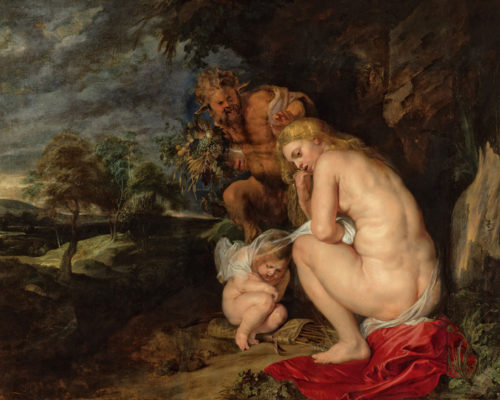
Peter Paul Rubens (Venus Frigida, 1614)
Reading, reading is the entry pass to the hidden mimetic. One must read, and re read, and then memorize. Theatre enters here, I think. Theatre is recited text. The actor is an emissary from beyond the grave. The recited lines of dead authors provides dialogue with the past. An audience concentrates, has a focused attention. That attention is their script. As Benjamin said, ‘a reading what was never written’. It is why I say religion comes from theatre and not the other way round.
As Geza Roheim noted, there is magic in all neurosis. Buying a big new shiny car is proof of the owners big shiny penis. If it is very fast, the penis is erect. If the car is scratched or dented, the owner suffers enormous anxiety, and a flaccid penis. The magic is broken. All art contains magic. Now, on a social level, the coercive propaganda of the state manufactures a kind of ersatz magic. Get the vaccine and stop the plague. Once we have all taken part in this ceremony, there will be infinite rewards. We will be part of a community of the elect. (even now the self labeling as vaccinated is a kind of seminary of preparation for the coming communion). But propaganda is not real magic. It is closer to schizophrenia, in a sense. The society is creating the voices to be heard in your head. Dj’s spin their records, fast food outlets serve burgers and vaccine. These ceremonies (dinner, or dancing with others at a ceremonial location) cannot sustain their magic. For their is no story in propaganda. There is the pretense to storytelling, but it is always actually absent. There is no close reading of propaganda. Propaganda is manipulation. So, the bourgeoisie driving this propaganda (the sort of prospectus for a story) about Covid and delta variants, and 4th waves, all other incantations, cannot finally believe in it. They desire to believe, but somewhere there is a voice, and it is the voice of the witch doctor, the shaman of their souls, the visitor who they say they have never met. And perhaps not, consciously. And so there is violence, and it is turned outward. The figure of Fauci, an avatar for the homunculus of medieval alchemy, appears out of nowhere on nightly news (“That the sperm of a man be putrefied by itself in a sealed cucurbit for forty days with the highest degree of putrefaction in a horse’s womb, or at least so long that it comes to life and moves itself, and stirs, which is easily observed. After this time, it will look somewhat like a man, but transparent, without a body. If, after this, it be fed wisely with the Arcanum of human blood, and be nourished for up to forty weeks, and be kept in the even heat of the horse’s womb, a living human child grows therefrom, with all its members like another child, which is born of a woman, but much smaller” Paracelsus, De natura rerum (1537)).
Snarky that may be, but it is also an allegory, a reading of the stars. The role of medical expert is now simply purchased. This is the result of such enormous concentration of wealth … it means everything and almost everyone can be bought. The propaganda is background music now, (to push this metaphor), its like the marketing apparatus is beatmatching, a DJ analyzing the vibe on the floor. Propaganda today switches narratives seamlessly, the focus shifting from delta to infections in the young. Statistics are like the constant beat behind the narrative. And after two years there is scant understanding even among those creating statistical charts and pie charts and flow charts and bar graphs and trellis line graphs and radar charts of the truth about the subject at hand. In fact few could articulate the actual topic.
Now, Benjamin noted (and of course Melanie Klein has, Winnicott, and many others) that childhood, and even infancy, demonstrate the inborn impulse of mimicry. The child (per Marion Milner’s work, which Elizabeth Stewart quotes) orients itself from and through the field of the Mother’s face. The caregiver at any rate. Now, the culture industry, as it were, can be seen (and advertising, certainly) as directly subverting this impulse. It starts with early childhood learning, and pre school, and later school. But it is also the drive of the transhumanists, the equating of progress with artificial wombs, the disappearing of the Mother altogether, in fact. Masking mothers is another form of erasing that mother. The child will mimic a blank field. Facial expressions will remain confusing and be misread long into adolescence.
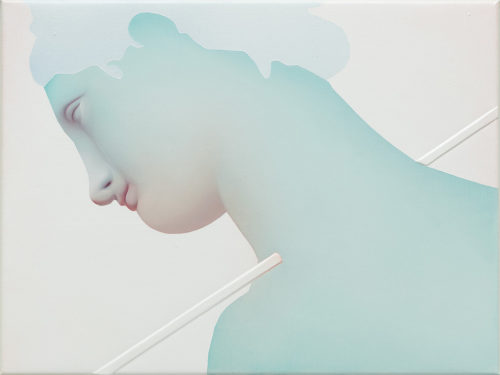
Vivian Greven
Benjamin, in again The Task of the Translator, writes of Holderin’s translation of Sophocles…
“Hölderlin’s translations from Sophocles were his last work; in them meaning plunges from abyss to abyss until it threatens to become lost in the bottom- less depths of language. There is, however, a stop. It is vouchsafed in Holy Writ alone, in which meaning has ceased to be the watershed for the ow of language and the ow of revelation. Where the literal quality of the text takes part directly, without any mediating sense, in true language, in the Truth, or in doctrine, this text is unconditionally translatable.”
It is not surprising that we have returned to theatre. The most profound expression of mimesis is in theatre. For Benjamin the approach was language, and more particularly translation. Now his concept of translation is complex, but its part of this hermetic near mysticism he took from Kabbalah. There are deep assumptions about the divinity of sound, of words and experience, and it far exceeds this post to get into them, and it exceeds my knowledge. But the Sophoclean translation, for Benjamin, revealed something, as it were, in the transition from one language to another. In much the same way Jan Kott found a truth *on* stage that could exist nowhere else (King Lear). The contemporary disrespect shown to language, to culture itself, is one of the factors that serves to hide the mimetic truth — the spiritual magic of just breathing. The trivializing of life itself is part of all selling, of commodity exchange. One is not just buying a commodity, one is giving away a part of yourself. The erosion of the ability to concentrate is perhaps the single most indelible quality of contemporary advanced capitalism.
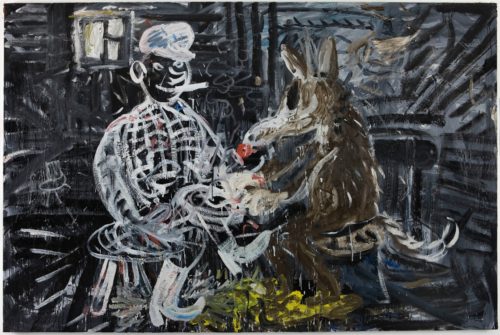
Armen Eloyan
“For Benjamin, on the other hand, the aura, which expresses and substantiates the autonomous existence of the artwork in the period of classical capitalism, is not a consciously created, misleading ideological facade. It is the historically-socially imposed relation of the recipient to the work of art. It is an objective feature of the “collective experience” of art which in this period guides the production of its works, the way they are structured. The collective experience of art equally determines the typical comprehension of works of the more remote past, created under different conditions of production and reception. It defines not what a work means, but the manner in which it can mean something for the contemporary public, because the meaning of a work is not some fixed quality inhering in it, but is inseparable from the (historically changing) ways of its reception, and, more generally, from its pre- and post-history. The dissolution of aura, associated with the new technical possibilities of mass reproduction, is seen in the context (and as a symptom) of profound changes in the collective apperception of reality in general, themselves expressing altered ways of life and new modes of habituation to the world. And the illumination of these connections aims at the awakening of consciousness from the dream-like compulsion of its “natural” way of perceiving the world and endowing it with meaning, a way which is only the unintentional expression of a petrified and reified form of life.”
Gyorgy Markus (Walter Benjamin, or The Commodity as Phantasmagoria)
It is interesting, in one sense, to compare Benjamin’s more esoteric writings with the work of Heidegger. For one was searching for social truth, and one was obscuring such truth in an effort of idolatry – the obscurantism of the fascist, the insistence on individual truth.
“The language of nature is comparable to a secret password that each sentry passes to the next in his own language, but the meaning of the password is the sentry’s language itself. All higher language is a translation of lower ones, until in ultimate clarity the word of God unfolds, which is the unity of this movement made up of language.”
Walter Benjamin (On Language as Such and on the Language of Man)
Under cover of Covid there is massive monopolization of retail, and in general global economic restructuring. One can expect severe travel restrictions, perhaps even within each country, and implementation of various versions of the vaccine passport, only including likely criminal histories as well as medical, and economic histories. Pensions will be stolen, as will all state assets I suspect. (we already see cultural assets sold off by museums at discount prices to the very wealthy). The idea is to reduce the first world to a new third world. American workers will face what workers in Haiti have faced for decades. And eventually its likely Universal Basic Income plans will be tested. Those are only the most obvious implications. And this has been made possible by the decades and decades of psychological trauma inflicted by a system that manufactures inequality and class domination intentionally.
to donate to this blog and to Aesthetic Resistance podcasts,
https://soundcloud.com/aestheticresistance
Use the paypal button at the top.

“The figure of Fauci, an avatar for the homunculus of medieval alchemy, appears out of nowhere on nightly news (“That the sperm of a man be putrefied by itself in a sealed cucurbit for forty days with the highest degree of putrefaction in a horse’s womb, or at least so long that it comes to life and moves itself, and stirs, which is easily observed. After this time, it will look somewhat like a man, but transparent, without a body. If, after this, it be fed wisely with the Arcanum of human blood, and be nourished for up to forty weeks, and be kept in the even heat of the horse’s womb, a living human child grows therefrom, with all its members like another child, which is born of a woman, but much smaller” Paracelsus, De natura rerum (1537)).” – Some masterfully dark humor John. I couldn’t keep the smile off my face while reading it. I might have even stifled a guffaw. Lately I find an occasional smile a rather necessary component to simply surviving the day. Thank you.
Yes, and yet the growing unity (and poverty) of the working class will also make clearer capitalism’s obsolescence. When everyone is Haitian, where will profits be found? It’s unfortunate that this involves so much suffering, but humans rarely learn without it.